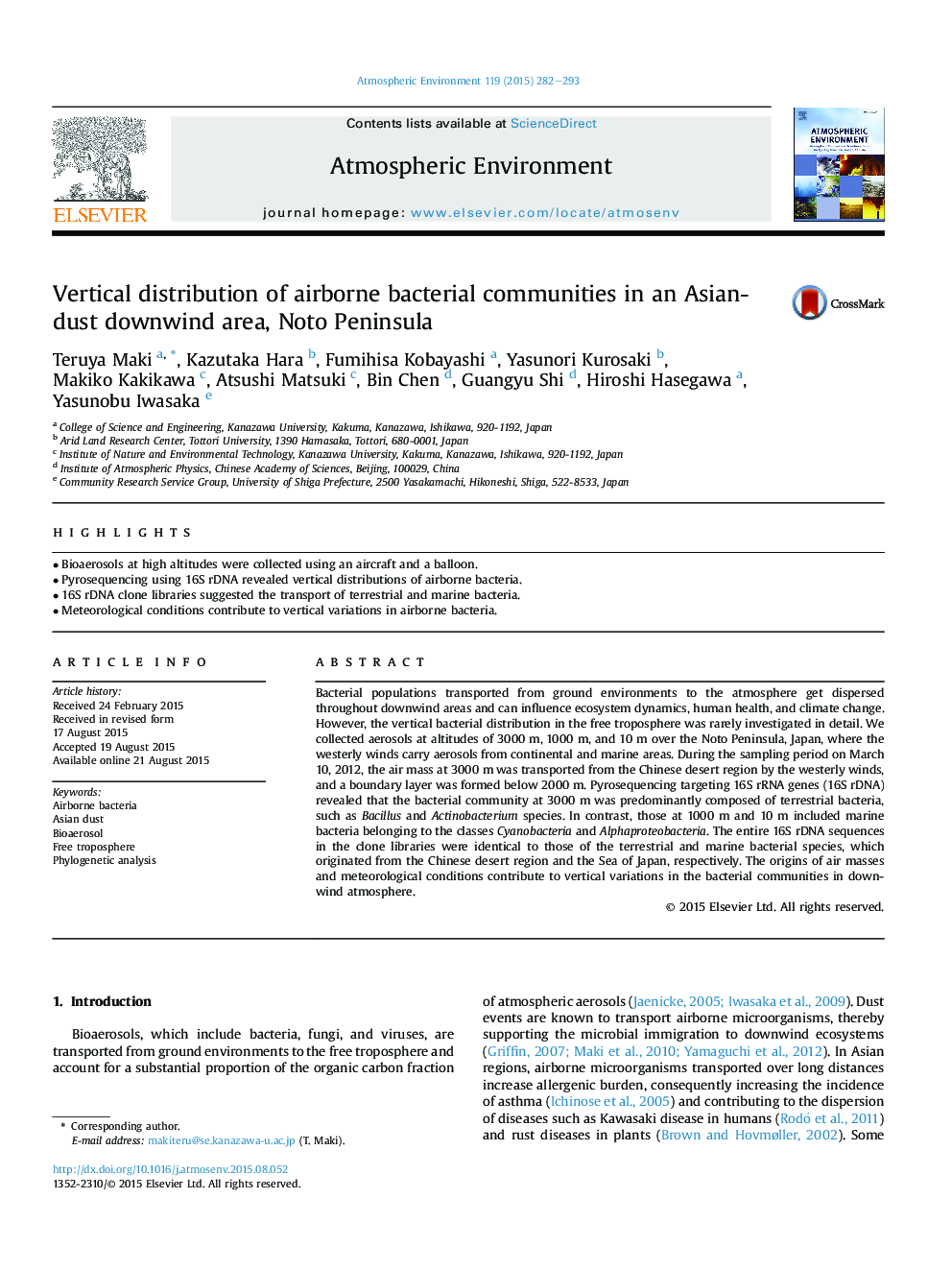| Article ID | Journal | Published Year | Pages | File Type |
|---|---|---|---|---|
| 6337663 | Atmospheric Environment | 2015 | 12 Pages |
Abstract
Bacterial populations transported from ground environments to the atmosphere get dispersed throughout downwind areas and can influence ecosystem dynamics, human health, and climate change. However, the vertical bacterial distribution in the free troposphere was rarely investigated in detail. We collected aerosols at altitudes of 3000Â m, 1000Â m, and 10Â m over the Noto Peninsula, Japan, where the westerly winds carry aerosols from continental and marine areas. During the sampling period on March 10, 2012, the air mass at 3000Â m was transported from the Chinese desert region by the westerly winds, and a boundary layer was formed below 2000Â m. Pyrosequencing targeting 16S rRNA genes (16S rDNA) revealed that the bacterial community at 3000Â m was predominantly composed of terrestrial bacteria, such as Bacillus and Actinobacterium species. In contrast, those at 1000Â m and 10Â m included marine bacteria belonging to the classes Cyanobacteria and Alphaproteobacteria. The entire 16S rDNA sequences in the clone libraries were identical to those of the terrestrial and marine bacterial species, which originated from the Chinese desert region and the Sea of Japan, respectively. The origins of air masses and meteorological conditions contribute to vertical variations in the bacterial communities in downwind atmosphere.
Related Topics
Physical Sciences and Engineering
Earth and Planetary Sciences
Atmospheric Science
Authors
Teruya Maki, Kazutaka Hara, Fumihisa Kobayashi, Yasunori Kurosaki, Makiko Kakikawa, Atsushi Matsuki, Bin Chen, Guangyu Shi, Hiroshi Hasegawa, Yasunobu Iwasaka,
